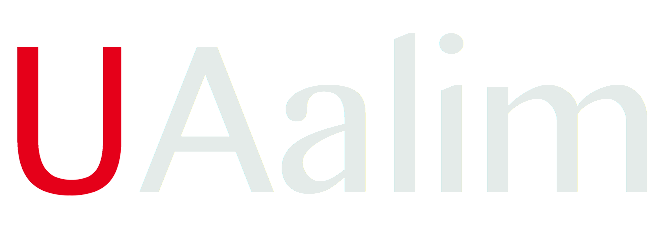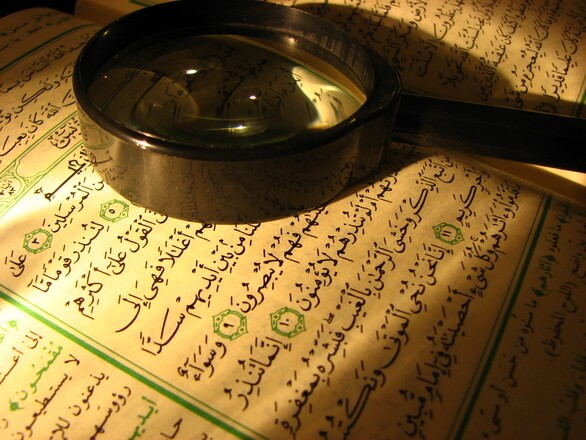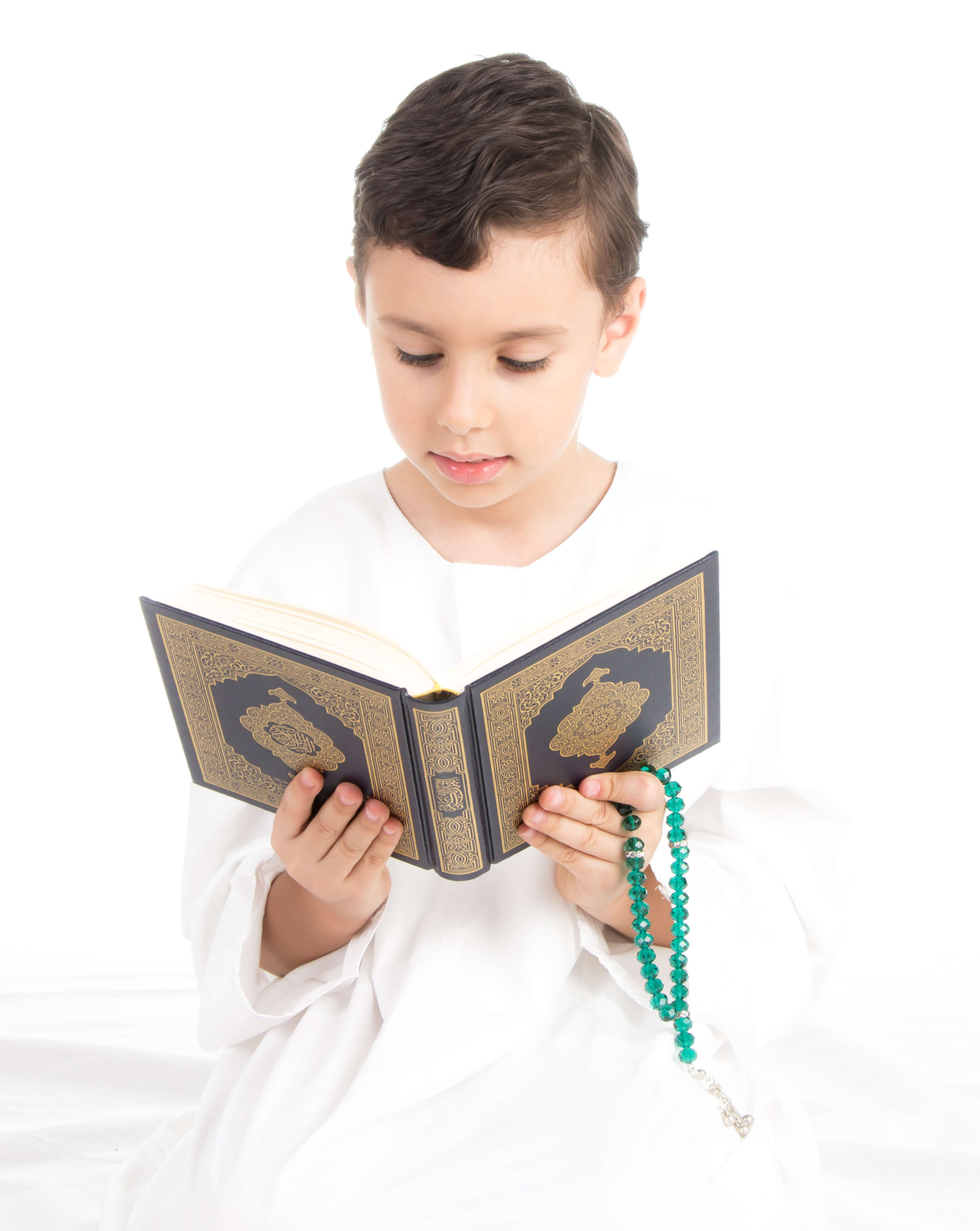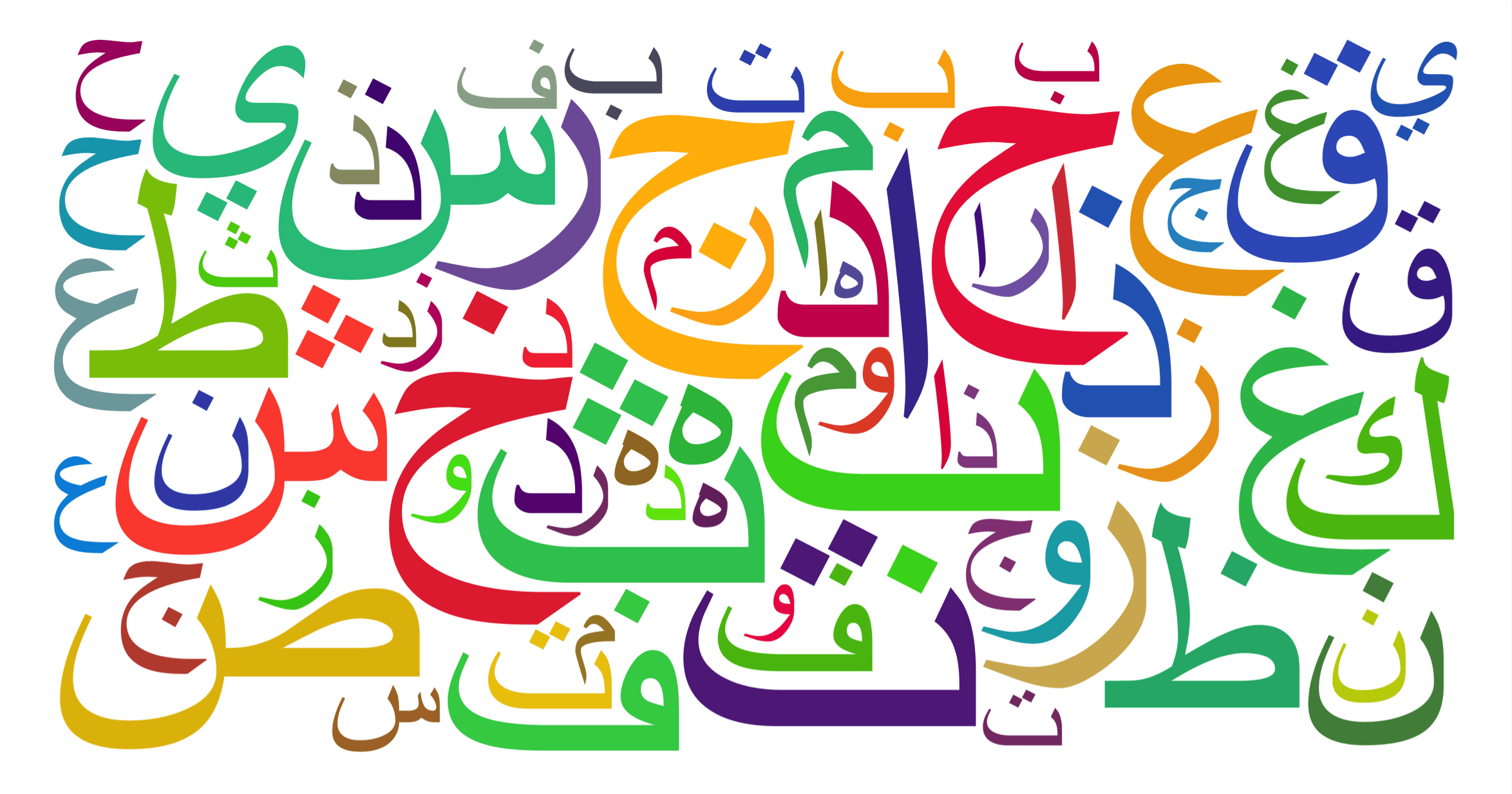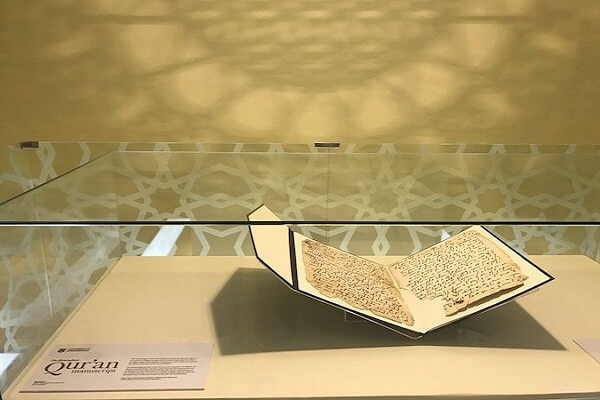بِسْمِ اللهِ الرَّحْمٰنِ الرَّحِيْم
The Evolution of the Quranic Text
How the Qur’an was preserved over the centuries
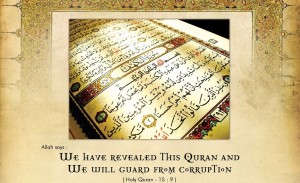 The society in which the Qur’an was revealed was a predominantly oral one. The Arabs valued eloquent speech and were known for their eloborate poetry and literary excellence. The Arab was known to express himself best orally. Although oral transmission was widely used, there were people in that time that could read and write.
The society in which the Qur’an was revealed was a predominantly oral one. The Arabs valued eloquent speech and were known for their eloborate poetry and literary excellence. The Arab was known to express himself best orally. Although oral transmission was widely used, there were people in that time that could read and write.
When the Quran would be revealed, Rasulallah (s) would recite and the companions would learn from listening and memorization. In that way, the Quran was preserved through memorization. However, there were a few companions who wrote down what was revealed at times. One of such companions known to record the Quran was Zayd ibn Thabit and Ubay ibn Ka’b. Many knew the Quran through their memory but because there came a time when many companions who memorized were being killed in battles in large numbers, the need for the Quran to be compiled in one book became necessary so that the Quran could be preserved.
If we look at our Mushaf today and compare it to the way the Quran was recorded in the early days, we would see a bit of a difference. Because the people at that time were familiar with the writing of the Quran, things only became troublesome when people from other cultures began to learn Quran from these scripts. In the time of Caliphates Umar ibn Alkhattab and Uthmaan, Islam spread beyond the Arab Peninsula. And many Muslims never being exposed to Arabic embraced Islam. A vowelization system would be needed so that the new Muslims could recite the Quran correctly. When reading the Quranic text at that time, the Arab would know if this letter had fatha or kasra. However, the new Muslim who is not used to Arabic language would not understand and read the Quranic script perhaps in a different manner than was meant. Therefore, to help preserve the Quran and its meaning, a new system of vowelization and dots were introduced so that the modern day reader would know exactly what letter and vowel the word takes. This way, the meaning of the Quranic verses would not be lost over time.
In the beginning, in the Uthmaani script, dots and vowelization were not added. The verses were not numbered and if you read it, you wouldn’t know exactly where to stop or pause. So, if a new Muslim from Europe for example, were to read this script, they wouldn’t know whether they were reading a letter, baa or a taa or thaa because it would all have the same shape. Neither would they know if the letter was in fatha, kasra, or damma vowel. As you can see, to the non-arab reader, the meaning may not be understood if it is read incorrectly. Nor would they be able to read the message properly. These additions only helped to guard the Quran.
One incident took place where someone recited “rasulih” instead of “rasuuluh” in the ayah,
|
“Annal-laaha baree-um minal-mushrikeena wa rasooluh….”
“And a proclamation from Allah and His messenger to all men on the day of the Greater Pilgrimage that Allah is free from obligation to the idolaters, and (so is) His messenger. So, if ye repent, it will be better for you; but if ye are averse, then know that ye cannot escape Allah. Give tidings (O Muhammad) of a painful doom to those who disbelieve.”
(Surah 9. At-Tawbah, Ayah 3)
A grammarian named Abul-Aswad realized that this small mistake changed the entire meaning of the ayah and this shook him. Previously, the governor of Al-Basra wanted him to make changes to the script so that the reading could be made more easy for the common reader. However, at the time, Abul Aswad was cautious not to make any changes to the script but after hearing the mistake in recitation by this person he changed his mind and he decided to develop the first set of marks to show the vowelization of the text. So he introduced the fathah (short vowel a), kasrah (short vowel e), dammah (short vowel u) and sukuun (stop) by adding dots above, below or at the end of a letter. The Sukuun was indicated by two dots. Later on the vowelization was known by adding the letter related to them (alif, yaa, waw).
After this began the beautification of the text. This began 3 years after the Hijrah in the 9th century when calligraphers began to decorate and compete with each other. This was the time when the tashdeed was introduced. Also the names of the surahs began to be added. In the time of Rasulallah (s) the companions would refer to certain surahs by the beginning of its first few words of the first ayah. For example, a surah was called “Ara aytallathi”. Also, divisions were added to let the reader know that a Juz, or half of a Juz has come to a completion. The numbers of verses were also added to the beginning of the surah.
Some scholars were against the addition of the scripts fearing that change may occur to the Quranic text.They took the statement of Ibn Mas’uud very seriously,
“Keep the Qur’aan free from additions and do not mix anything with it.”
However, there were some who didn’t reject. Hasan Al-Basri, Ibn Sireen, Rabeeah said the nuqtah and the tashkeel were acceptable. They were scholars from among the students of the Sahabah. Although some decoration where added around the scripts, the feared additions to the Quranic text never took place. Alhamdulillah.
The Uthmaani script was written in the Qurayshi dialect. When Zayd Ibn Thaabit differed with three Qurayshi scribes over how to spell Taboot, ‘Uthmaan said,
“Write it تابوت (taaboot), for verily, the Qur’aan was revealed according to the Qurayshee dialect.”
All of these changes that were added to the Uthmaani script were only added so that the true meaning and recitation of Quran could be preserved. The changes were made so that the reading was made easier for the average Muslim. Although the script we have now may look different from the script in the time of Rasulallah (s) the meaning of the Quran still remains the same and intact. The only thing that has changed is the people and their understanding of the Arabic. The people in the time of Rasulallah (s) were masters in Arabic. The people of today are not so. So these changes were made to accommodate the average Muslim and to make the reading of the text easy and understandable so that the Quran can still be read in every home and the message of Islam, the message of laa ilaaha illallaah can still continue. In this way, the Book of Allah has been preserved. And Allah knows best.
*Hope you enjoyed. If you so, be sure share with your friends! For more good stuff be sure to follow me on any of my social media websites, and be sure to check out my latest course here Salaah
Baarakallah Feekum! 🙂

